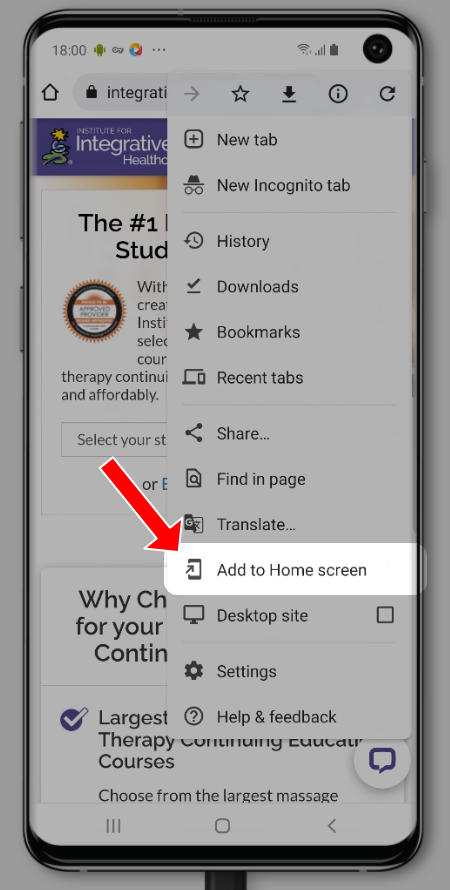

Understanding the Healing Crisis After Massage
While sometimes used interchangeably with the “Herxheimer Reaction,” a healing crisis is a distinct phenomenon that occurs when the body reacts to previously stored metabolic waste or stagnant substances released during bodywork. The more accumulated tension or stored substances in the body, the more pronounced the reaction may be. This response indicates that the bodywork is supporting the body in restoring balance, improving circulation, and releasing muscular tension, rather than “detoxifying” in the medical sense. A healing crisis may occur immediately, within several days, or even weeks after a session, but it is always temporary. Most symptoms resolve within days, though some may persist for several weeks, often appearing after a client initially feels their very best.
What Is a Healing Crisis?
It’s important to point out that while the term ‘healing crisis’ is often used in complementary and alternative medicine (CAM), research on the phenomenon is very limited. Most descriptions are based on anecdotal reports or practitioner experience rather than well-documented clinical findings. Still, many clients and therapists find the concept helpful for understanding temporary post-session discomfort or emotional release.
A healing crisis is a reaction to previously sequestered substances being systemically released. The body stores such substances in many tissues, primarily muscle, fascia, and adipose. During manipulation, whether through deep tissue massage, energy work or reflexology, the body mobilizes these substances into circulation. This sudden change can create temporary discomfort until the body’s systems adjust. While unpleasant, a healing crisis signals that the body has begun a process of restoration and rebalancing.
How a Healing Crisis Differs from the Jarisch-Herxheimer Reaction
Importantly, a healing crisis is distinct from a Jarisch-Herxheimer reaction, which is a medically recognized response to antibiotics during bacterial infections. Understanding this distinction helps therapists and clients recognize normal post-session responses without conflating them with medical reactions.

Recent discussions emphasize that a healing crisis is not merely a sign of waste mobilization but also a complex interplay of physical, emotional, and energetic releases. Massage contributes to circulation, lymphatic flow, and overall physiological balance, supporting the body’s natural regulatory processes. This perspective highlights the holistic nature of bodywork and its effect on the entire mind-body system.
Emotional and Physical Components of a Healing Crisis
While effects can be physical, emotional, or spiritual, a true healing crisis typically involves all three aspects. Due to the body’s fascinating ability to store memories and emotions in the tissues, their recollection or release can accompany the manipulation of those tissues. Most practitioners refer to the surfacing of memories or emotions without physical symptoms as an emotional release. An emotional release is a typical component of most healing crises.
Emotional Releases
Most people have some emotional issues or traumas occurring sometime in their life. Whenever an emotional trauma or situation happens it is stored in the nervous system. Though we may think we are over it and not even remember it, the mark or impression could still be there and negatively affect our health and psychology. During any form of bodywork it is possible to release these stored issues or traumas. An emotional release may give rise to feelings of anger, grief or another emotion. This release is indicative of a healthful body transformation, where the body clears itself of the negativity previously stored within.
Learning to suppress our feelings typically causes them to go into our physical bodies. The tensing of neck muscles will prohibit frowning, holding one’s breath can replace crying and jaw clenching may stifle yelling. When these patterns are repeated, emotional suppression becomes a habit, the unconscious mind takes over, and the body becomes a storehouse for unexpressed, unconscious feelings.
Suppressed emotions and traumas are a key factor in the development of muscular tension, high blood pressure, heart disease, immune weakness and other diseases. Most practitioners agree that real healing begins when the client releases this suppression, which frees the body to heal at the deepest level.
Energy-based techniques, such as Reiki, Polarity Therapy, and Healing Touch, are increasingly being incorporated to enhance holistic healing. These methods can support emotional release, promote relaxation, and balance the body’s energetic systems, complementing traditional bodywork.
Physical Symptoms
While each individual’s body is unique, there are some common symptoms typical of a healing crisis. Below is a list of symptoms most often experienced after receiving bodywork:
- Dizziness and light-headedness
- Fatigue
- Nausea and vomiting
- Low-grade fever
- Joint and muscle aches
- An odd or metallic taste in the mouth
- Muscle cramps
- Skin eruptions
- Intense emotional states
- Increased sweating, urination or defecation
Lymphatic drainage massage, which promotes fluid movement and lymphatic circulation, can sometimes lead to a healing crisis. Clients may experience fatigue, joint and muscle pain, headaches, or nausea when the tissues suddenly mobilize these substances.
Recognizing a Healing Crisis vs. Other Conditions
Is This a Healing Crisis?
After a session, a client may experience a number of uncomfortable symptoms. In order to feel confident that this is a healing crisis, and not stemming from different etiology, the following causes should be ruled out:
- Low blood sugar – A hypoglycemic reaction can cause light-headedness, dizziness, nausea and fatigue.
- Pregnancy – A new pregnancy can cause dizziness, nausea, vomiting and fatigue.
- Starting to get sick – Catching a cold can cause dizziness, headache, feverishness, nausea, achiness and fatigue.
If the therapist is unsure of the reasoning behind a client’s maladies, and the client is concerned, refer them to their physician.
Managing and Preventing Healing Crises
The best strategy to prevent or minimize a healing crisis is to support and facilitate the body’s toxin removal and encourage emotional health.
Practical Tips for Clients and Therapists
The best ways to facilitate toxin removal are:
- Hydration – Drinking extra water immediately following and sequentially after bodywork to aid the body in toxic elimination through urination and perspiration.
- Fiber – Increasing dietary fiber will support the gastrointestinal system’s swift removal of waste via the bowels.
- Sleep – Feelings of fatigue or sleepiness are best honored. Listening to one’s body by getting the rest it asks for will help the body in its recovery process.
Massage therapy is increasingly recognized for its role in mental health, including managing anxiety, depression, and chronic stress. Personalized treatments tailored to individual client needs are also emphasized, improving outcomes for both detoxification and emotional support.
Supporting Emotional Release
During an emotional release, the most important item a therapist can lend is a safe environment while being supportive of the client’s process. Since bodyworkers are not trained as psychotherapists, below are some suggestions to best convey safety and support:
- Grounding – If appropriate, maintain a grounding touch with your client. This can take different forms, depending on the therapist’s level of education and comfort around grounding.
- Listening – Focus on listening, not counseling. Clients often need to verbalize their feelings to be able to move past them.
- It’s okay – Confirm to your client that an emotional release is not only okay, but it will amplify the effectiveness of your session. This can be prefaced by stating that when an emotion surfaces, the body is saying it’s time to let it go.
When to Seek Professional Advice
Most releases surface and resolve quickly. However, if a client exhibits frequent, strong emotional releases during sessions, or if the client’s anxiety or fear increases as a result of bodywork, it’s important they seek the help of a professional counselor.
A healing crisis may take both bodyworker and client by surprise, but being prepared for its possibility can be a freeing, learning experience. A therapist may wish to discuss this aspect of healing with their client prior to a session, or may find this information helpful during or following a client’s healing crisis. The release of the old and in with the new is what physical and emotional healing are all about, and the welcoming of this transformation opens the door to leading a healthier, more conscious, life.
Originally posted October 2006. Updated September 16, 2025.














Thank you so much for writing this!
I’ve been going to psychotherapy for a year and starting to feel so many things. All these past emotions are coming up and making me physically ill (flu like) as I move through them. It’s scary but I had a feeling they were for the greater good of healing. I really, really appreciate this article, it really helped me out in a moment of panic <3